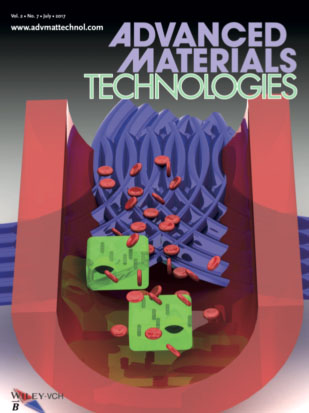Ultrasound micro/nanorobotics
Ultrasound using moderate levels of pressure is regarded as a safe, non-invasive and relatively inexpensive procedure that is used extensively in clinical diagnostics and therapeutics. Typically, high-frequency ultrasound in the range of 1-15 MHz provides good spatial resolution, which is used for imaging, while the low-frequency ultrasound of 1 MHz penetrates deeper into the tissue, which is important for therapeutic applications.

We have developed the first nanorobot that is propelled by travelling acoustic waves. The nanorobot was fabricated by multi-step electrodeposition and layer-by-layer deposition, comprised of a rigid bimetallic head and a flexible tail as shown in Fig. 1a. The ultrasound field is resonantly forced to vibrate the nanorobot, which induces left-to-right translation motion of the nanorobot in the liquid, Fig. 1b. We have also developed another class of acoustic robot that uses the resonance behaviour of trapped air bubbles, Fig. 2. As the frequency of the acoustic waves approaches the resonance frequency of the trapped bubble, the amplitude of the oscillation of the bubble reaches its maximum value. The resulting oscillations give rise to a propulsive force. The bubble-based microrobots also exhibited successful propulsion in glycerol and viscous hydrogel liquids. Travelling waves are particularly advantageous because they interact directly with the robot’s structural resonances for propulsion, which means they are independent of the field being developed in the chamber, so almost any arbitrary acoustic wave field that resonates with the micro/nanorobot is sufficient to drive it.
Contact: Daniel Ahmed
References:
D. Ahmed, T. Baasch, B. Jang, S. Pané, J. Dual, and B. J. Nelson, "Artificial swimmers propelled by acoustically activated flagella", Nano Lett., vol. 16, pp. 4968–4974, 2016.
D. Ahmed et al., "Selectively manipulable acoustic-powered microswimmers", Sci. Rep., vol. 5, p. 9744, 2015.
D. Ahmed, C. Dillinger, A. Hong, and B. J. Nelson, “Artificial acousto-magnetic soft microswimmers,” Adv. Mater. Technol., vol. 1700050, pp

